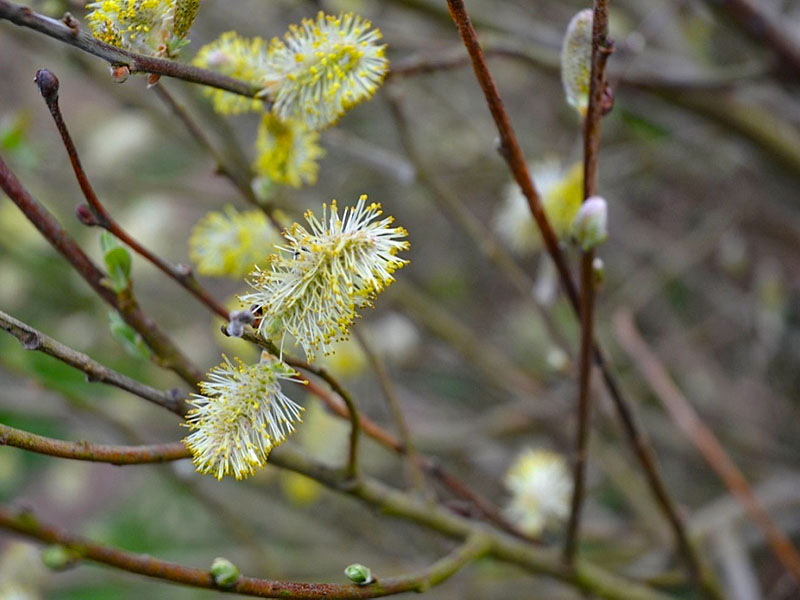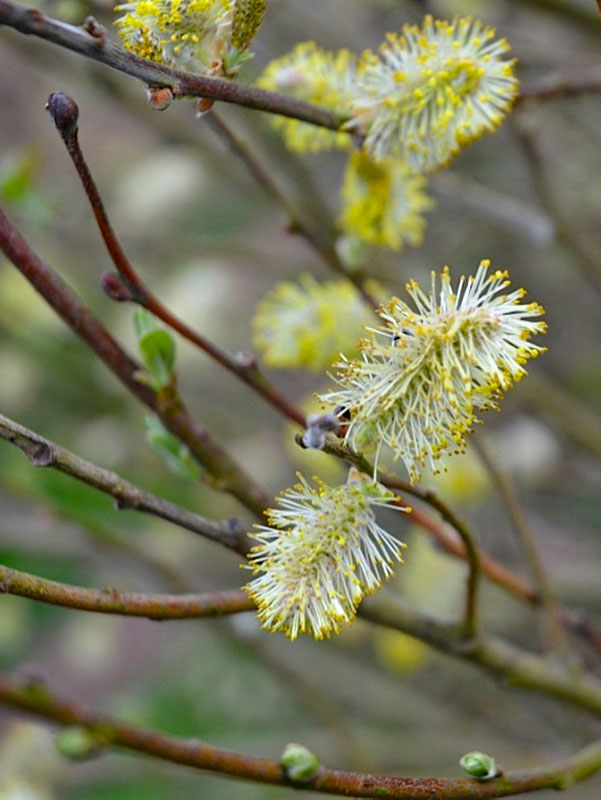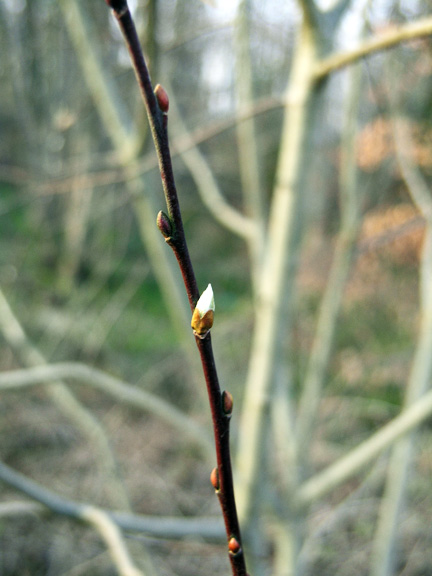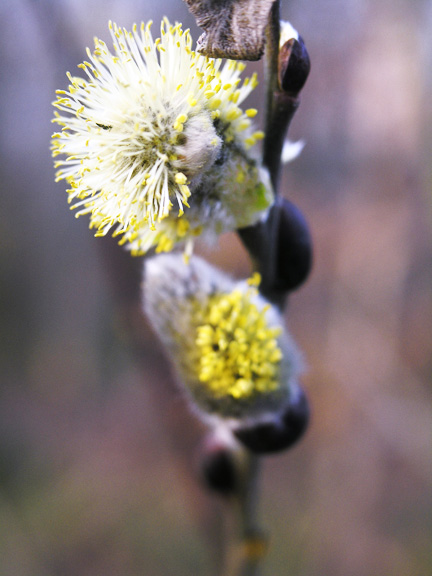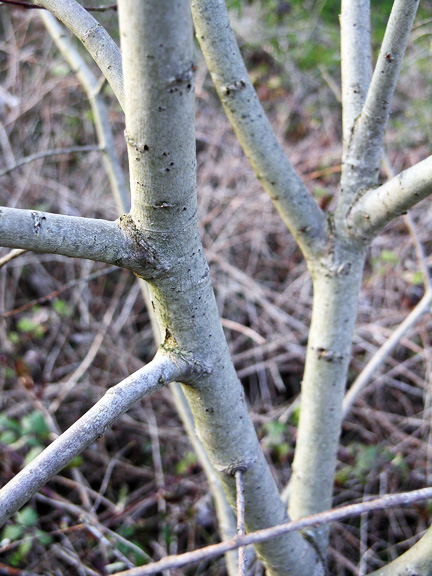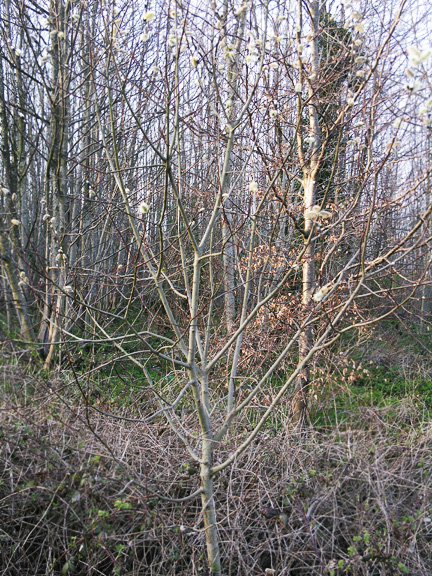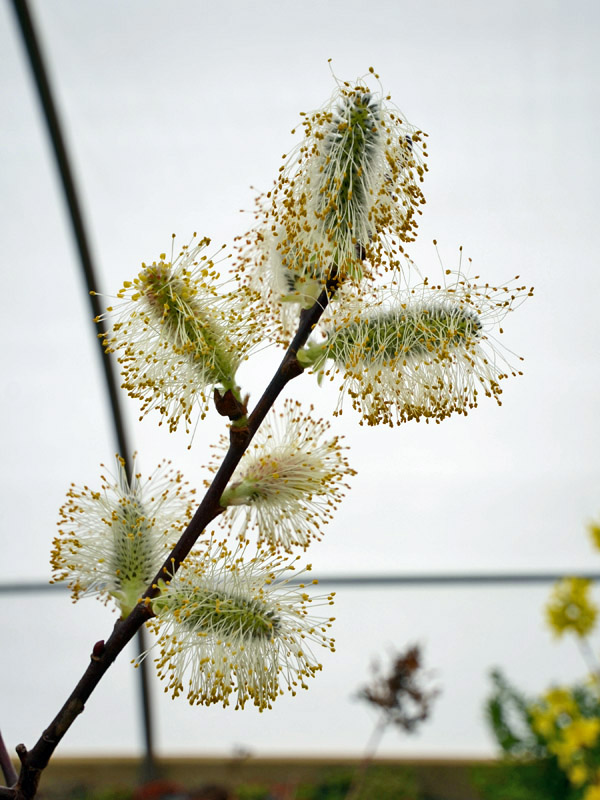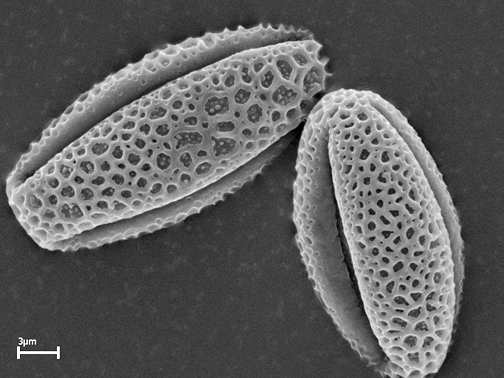| ID Characteristic | 1 cm male catkins in March and early April, purplish-brown buds. |
| Shape | Rounded crown. |
| Propagation | Cuttings placed in moist soil will start to root in a few weeks. Cuttings will also root in a vase of water. |
| Cultivation | Salix caprea roots very easily. Cuttings placed in moist soil are likely to produce roots within a few weeks. Likes full sun and moist soils. |
| Pests | Susceptible to galls, leaves are eaten by browsing mammals. |
| Notable Specimens | St Agnes Head, Cornwall, United Kingdom. |
| Habitat | Grows along the sunny edges of woodlands, along lake shores and river banks. |
| Bark/Stem Description | Yellowish brown stems with rough fissured brown older bark. |
| Flower/Leaf Bud Description | 5 - 10 mm long purplish brown. |
| Leaf Description | Dark green spring colour, yellow autumn colour. Alternate leaf arrangement, simple leaves 5-10cm long and 2.5 - 5 cm wide. |
| Flower Description | Catkins are surrounded by blackish scales, the catkins are densely haired with yellow anthers. |
| Fruit Description | Greenish brown small capsule 5 - 10 mm with white fluff on the seeds. Long. |
| Colour Description | Dark green summer foliage followed by
yellow autumn foliage with Dark brown bark. |
| Texture Description | Medium-fine. |
